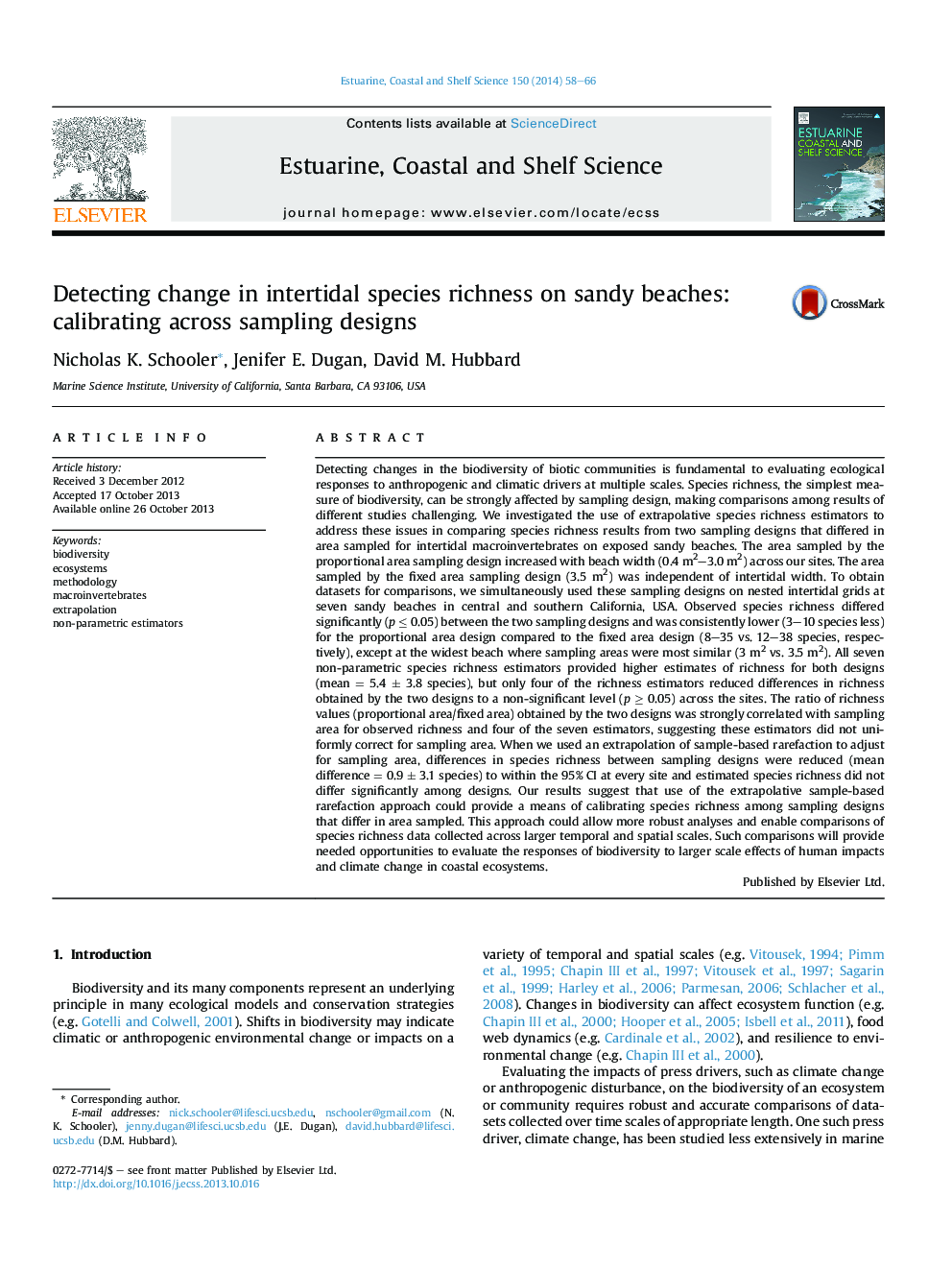| Article ID | Journal | Published Year | Pages | File Type |
|---|---|---|---|---|
| 4539648 | Estuarine, Coastal and Shelf Science | 2014 | 9 Pages |
Detecting changes in the biodiversity of biotic communities is fundamental to evaluating ecological responses to anthropogenic and climatic drivers at multiple scales. Species richness, the simplest measure of biodiversity, can be strongly affected by sampling design, making comparisons among results of different studies challenging. We investigated the use of extrapolative species richness estimators to address these issues in comparing species richness results from two sampling designs that differed in area sampled for intertidal macroinvertebrates on exposed sandy beaches. The area sampled by the proportional area sampling design increased with beach width (0.4 m2–3.0 m2) across our sites. The area sampled by the fixed area sampling design (3.5 m2) was independent of intertidal width. To obtain datasets for comparisons, we simultaneously used these sampling designs on nested intertidal grids at seven sandy beaches in central and southern California, USA. Observed species richness differed significantly (p ≤ 0.05) between the two sampling designs and was consistently lower (3–10 species less) for the proportional area design compared to the fixed area design (8–35 vs. 12–38 species, respectively), except at the widest beach where sampling areas were most similar (3 m2 vs. 3.5 m2). All seven non-parametric species richness estimators provided higher estimates of richness for both designs (mean = 5.4 ± 3.8 species), but only four of the richness estimators reduced differences in richness obtained by the two designs to a non-significant level (p ≥ 0.05) across the sites. The ratio of richness values (proportional area/fixed area) obtained by the two designs was strongly correlated with sampling area for observed richness and four of the seven estimators, suggesting these estimators did not uniformly correct for sampling area. When we used an extrapolation of sample-based rarefaction to adjust for sampling area, differences in species richness between sampling designs were reduced (mean difference = 0.9 ± 3.1 species) to within the 95% CI at every site and estimated species richness did not differ significantly among designs. Our results suggest that use of the extrapolative sample-based rarefaction approach could provide a means of calibrating species richness among sampling designs that differ in area sampled. This approach could allow more robust analyses and enable comparisons of species richness data collected across larger temporal and spatial scales. Such comparisons will provide needed opportunities to evaluate the responses of biodiversity to larger scale effects of human impacts and climate change in coastal ecosystems.
